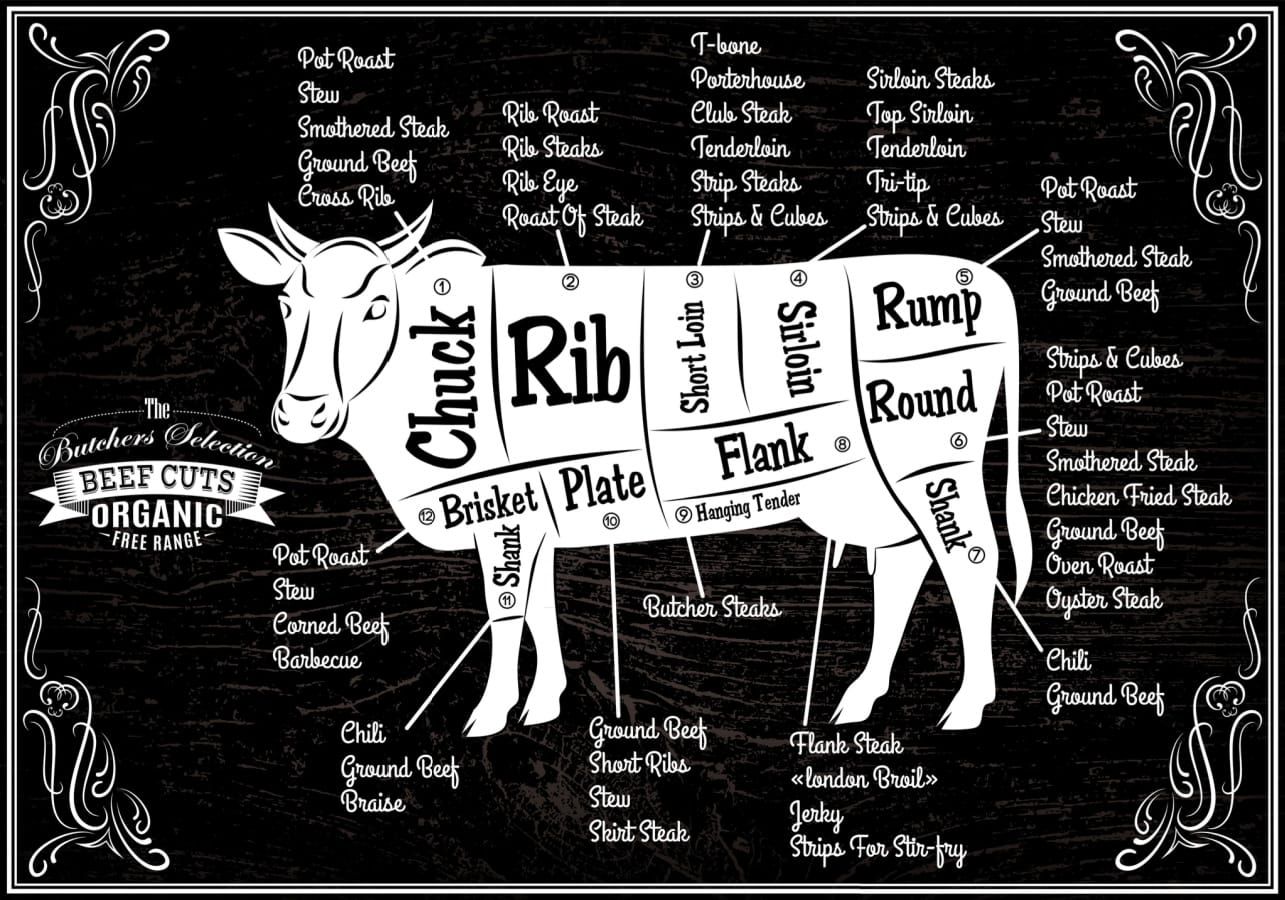Pot Roast
This story is about pot roast, and any story about food is also about the weather.

This week I came across writing advice that said never begin a story with the weather. Well, it is raining and windy, and the leaves are falling steadily. We arrived home last night from out of town, and the lawn was as we left it. By the close of business today, it will be eligible for raking.
In tandem with the wind, rain and falling leaves, the Hunters' Moon was this past Sunday, October 9th. The Hunters' Moon, also called the Blood Moon (because of all the hunters), refers to the first full moon after the Autumnal Equinox. Traditionally, it signals the onset of fall and colder weather.
This story is about pot roast, and any story about food is also about the weather. Subscribers to this postcard who were guests at the Hancock Inn, which my wife Marcia and I owned for ten years, know that pot roast was a staple of the dining room menu. We inherited that fact when we purchased the Inn, and we did our best to honor its place in the hearts of diners, including those who would order it in July and August, with the air conditioning at full blast and the climate more suitable to outdoor grilling and sauteed, crisp green vegetables from the garden.
We confess that braising beef in the summer months, when working muscles such as the bottom round and chuck were better suited to flavorful grinds and sauces, slightly tormented us. Roast turkey with sage and sausage dressing, cranberry sauce, mashed potatoes, and gravy is delicious any time. But it is just not right in August after swimming in the lake all afternoon, sitting at the table wearing short sleeves and sandals. At least not here, in Monadnock, the heart of New England, particularly if you plan to remain through winter relying on comfort foods of that kind and the associated squashes and root vegetables.
Anyway, we made a lot of pot roast over ten years - at least fifteen pounds of it a week or roughly seventy-five hundred pounds of it over our tenure as innkeepers. Probably more. At one point, I suggested getting bomber jackets for the gift shop with little portions of flying pot roasts on the lapel. Marcia nixed it.
As chef at the Inn, here is how I prepared the pot roast. It is a two-day process.
4 - 5lbs of bottom round or chuck. I prefer chuck. More fat. But it can fall apart if you overcook it.
Vegetable oil (grapeseed or canola, preferred because they have higher smoking points)
A large onion or two, a few carrots, and celery chopped.
2-3 (or 4) Garlic cloves peeled and sliced
Tomato paste (or canned whole tomatoes, also good. It is up to you.)
Bay leaves
Parsley
Peppercorns
Red Wine
Beef/Chicken/Vegetable stock, or water (water is just fine)
Corn Starch
Preheat oven to 325.
Lightly salt the meat on all sides and bring it to room temperature before cooking (about an hour).
Heat a large casserole or Dutch oven with 2-3 tablespoons of vegetable oil to almost smoking. Carefully place the roast into the pot (use tongs, if possible. Place, do not drop, so you do not splatter hot oil), and brown thoroughly on one side or more. [The standard for browning meat is changing. One well-browned side is fine. You are looking for the fond on the bottom of the pot.]
Remove meat to a platter, and carefully pour out the fat. Add another two tablespoons of veg oil and reheat to almost smoking.
Add chopped onion, carrot and celery. Saute until soft.
Add Garlic cloves and stir for 1-2 minutes until fragrant.
Add 1-2 TBL of tomato paste. Stir.
Add 1.5 cups of wine and allow it to reduce until almost evaporated.
Return beef to pot and add stock or water to cover three-quarters of the beef.
Throw in a few Bay Leaves, about one dozen Peppercorns and several sprigs of Parsley.
IF you are using a can of drained whole tomatoes, add them now.
Bring to a simmer/low boil. Cover and pop it in the oven to cook for about three and a half hours. A fork inserted into the thickest part of the beef should go in and out without effort. Check the roast periodically. If it is boiling hard, turn the oven down to 300.
Remove the roast from the oven and let it cool on the stove for half an hour in the pot. If there is room, put the whole thing in the refrigerator, uncovered, and leave it overnight. This will add flavor. Otherwise, extract the roast from the pot and strain the liquid into a heat-proof container. Toss the leftover vegetables. Refrigerate the strained liquid and the roast.
Next day, skim and discard the fat off the top of the braising liquid and pour liquid into a pan, reserving about 4TBL (one-quarter cup). Bring liquid to a boil and start to reduce. Taste the reduction frequently for flavor and to make sure it is not getting salty (remember, the beef was salted before cooking). When the liquid has reduced by about one quarter, and the taste is rich enough, mix the reserved 1/4 cup of liquid with 2-3 TBL of cornstarch until smooth, then slowly whisk the cornstarch mixture into the sauce. Bring it back to a boil. It will thicken. Simmer for several more minutes. Season to taste. Slice the roast (at a bias for pleasingly large slices) and immerse in the sauce. Warm until hot in the oven or on the stovetop.
Mashed potatoes are not a required accompaniment to pot roast. The combination of pureed carrot and parsnip is actually better; more assertive. Any of the arriving squashes, such as acorn, butternut or kabocha are excellent. Polenta is very good and, of course, noodles or pasta. You want something that will add support to the luscious reduction sauce you made with the corn starch, which any of those things will do, with the addition of a sturdy, late-season green such as kale or chard.
The only requirements are a sweater and warm socks, perhaps a warm fire, and a bright Hunters' Moon.


